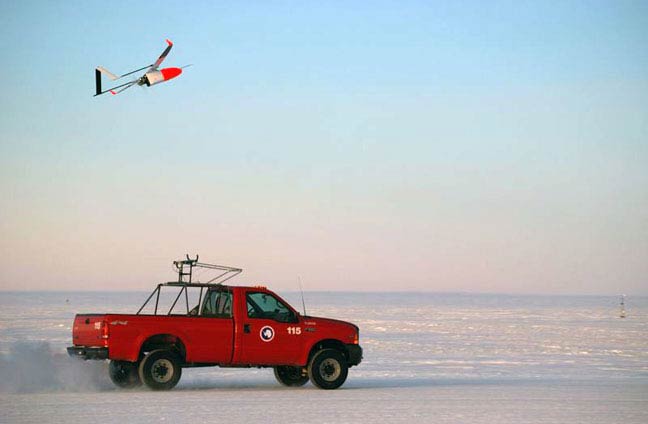Robotic Planes Capture Detailed Images of Remote Antarctic

SAN FRANCISCO — Unmanned planes flying over one of the most forbidding regions of Antarctica have captured the first close-up images of the area, where the cold, dense seawater that drives the ocean's circulation is formed. These unmanned aerial vehicles (UAVs) are proving a boon to scientists who study the frozen regions at Earth's poles, many parts of which simply aren't reachable to humans. Recent missions that have flown UAVs have yielded information about the surface features of sea ice, glaciers and icebergs, as well as the polar creatures that make their homes on the ice, polar scientists said here today at the annual meeting of the American Geophysical Union. The UAVs look like remote-controlled toy planes, but were actually originally developed by the military. Scientists have recently begun repurposing these planes to fly to unreachable polar areas, where instruments aboard the planes can snap photos and measure temperature and other variables. The results are showing more detail than any other method, including as satellites or even manned flights. "We're getting detail that we just never had before," said Betsy Weatherhead of the National Oceanic and Atmospheric Administration in Boulder, Colo. The UAVs are also much safer to use, as both of Earth's polar regions tend to be plagued by bad weather.
"We're not as worried if we lose one of these things," Weatherhead said. "Every [polar researcher] knows a researcher who has died trying to get data." One recent UAV mission in Antarctica examined a polar ocean feature called a polynya, which is an area of open ocean surrounded on all sides by either a coast, sea ice, or both. A polynya is an area where there are "very strong winds that drain off the Antarctic continent," providing scientists with an opportunity to understand the weather of the Antarctic, said John Cassano of the Cooperative Institute for Research in Environmental Sciences, also in Boulder. The regions are also important sources of the cold bottom water that helps drive the circulation of Earth's oceans. The recent flights, conducted in September 2009, flew to Antarctica's Terra Nova Bay to observe one perennial polynya. The images taken by the UAVs gave the closest views ever seen of the features: White-capped waves and sea ice can be seen blowing across the surface when winds are high, while the ocean looks dark and calm under lighter winds. UAVs can also observe the denizens of the poles. Another recent series of flights observed ice seals, and others are planned to fly over penguin colonies. Scientists think UAVs will give them better estimates of the populations of such creatures.
- North vs. South Poles: 10 Wild Differences
- Images: Alien Life of the Antarctic
- Images: Ice of the Antarctic
Sign up for the Live Science daily newsletter now
Get the world’s most fascinating discoveries delivered straight to your inbox.

Andrea Thompson is an associate editor at Scientific American, where she covers sustainability, energy and the environment. Prior to that, she was a senior writer covering climate science at Climate Central and a reporter and editor at Live Science, where she primarily covered Earth science and the environment. She holds a graduate degree in science health and environmental reporting from New York University, as well as a bachelor of science and and masters of science in atmospheric chemistry from the Georgia Institute of Technology.










